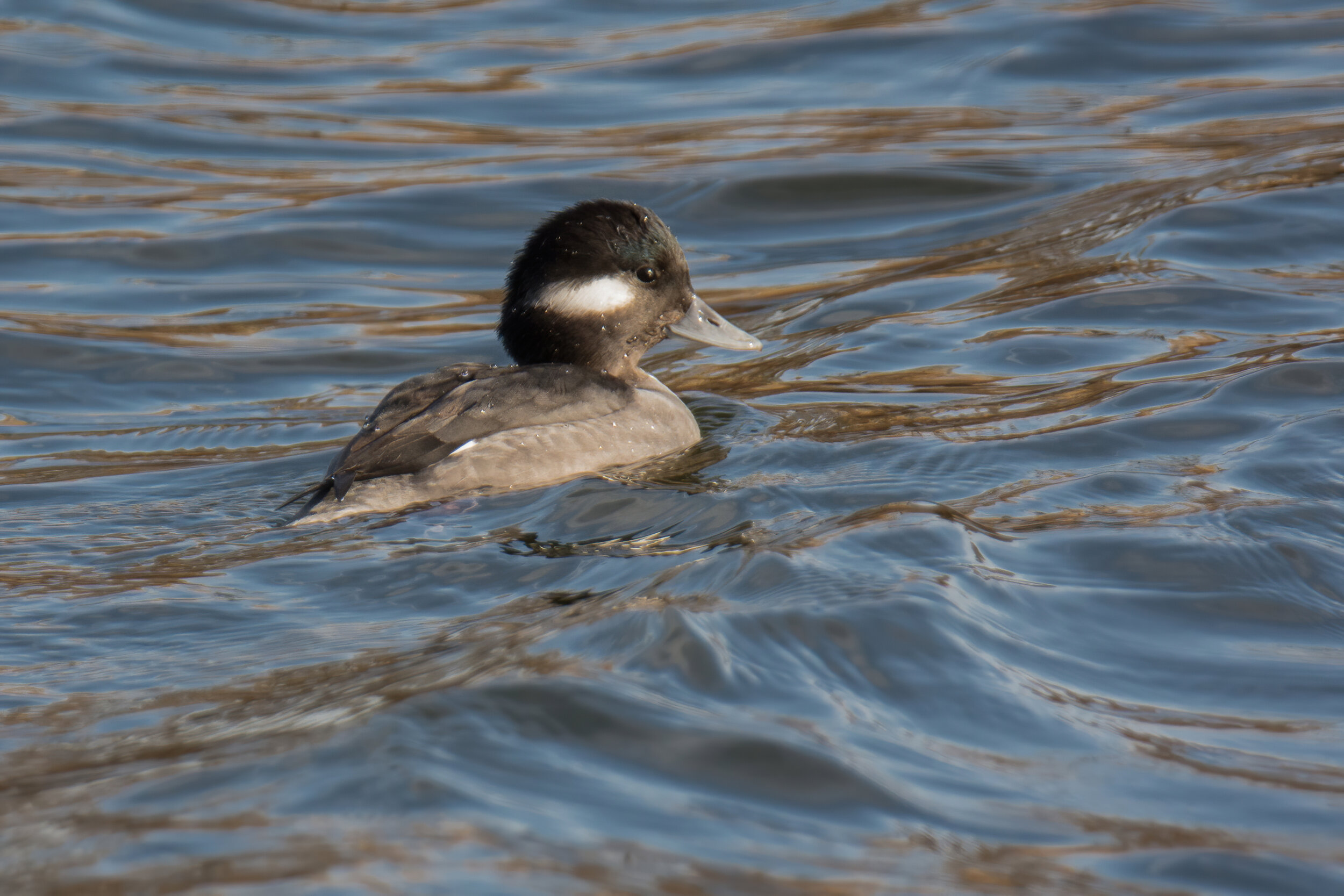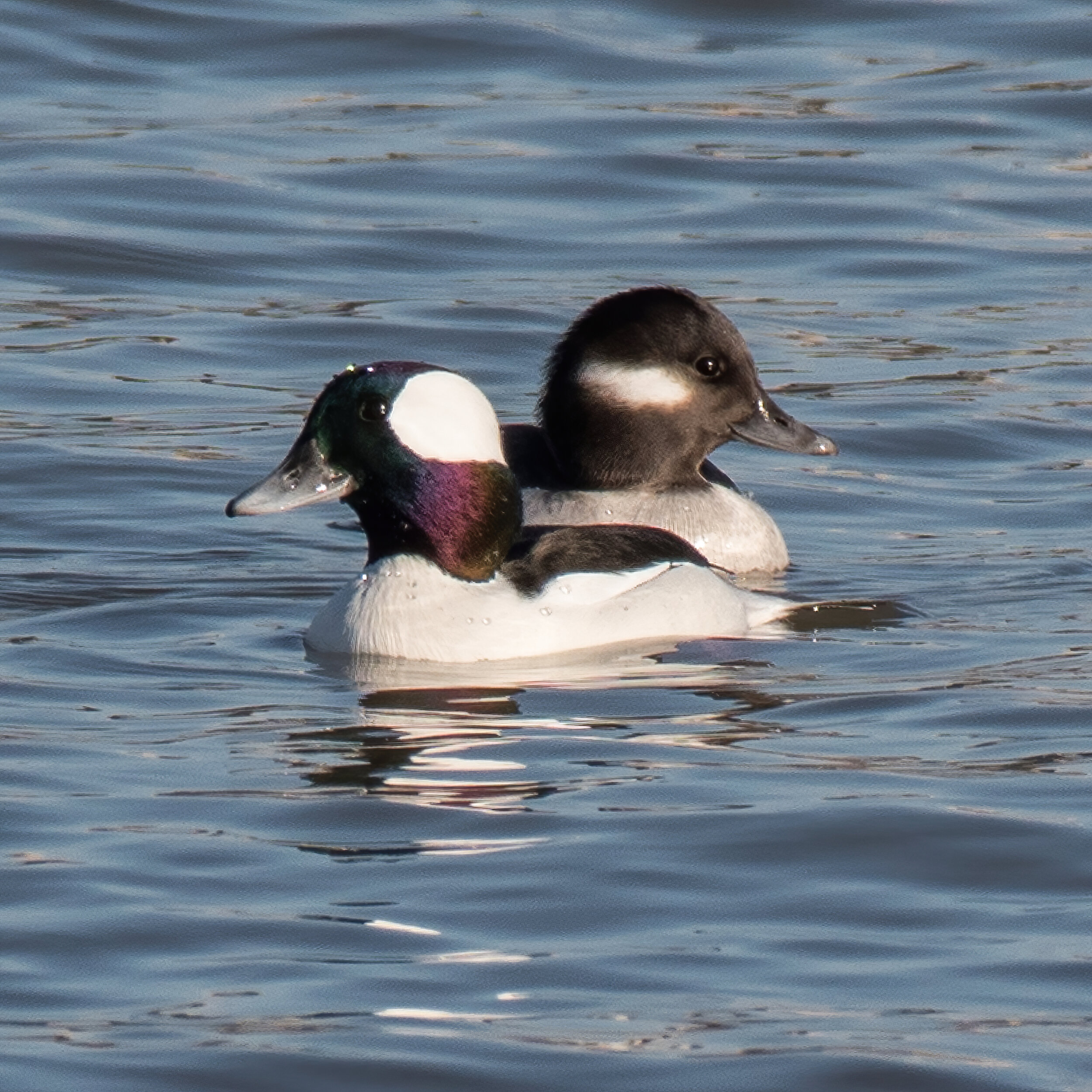Dan's Feathursday Feature: Bufflehead
How to attract Bufflehead to your backyard.
Dig a hole six to ten feet deep and about as large as a soccer field.
If you do not have a yard big enough for this, move.
In the process of digging your hole, if you do not hit an artesian well or a water main or some other source of water, fill your new hole with water from your garden hose.
Plant poplar seedlings around your entire pond.
Wait twenty years or more for the trees to grow to ten inches in diameter.
During those two decades, buy yourself a chainsaw and a brush hog. Spend countless pleasant hours cutting back the phragmites and buckthorn and other invasive species that will try to overrun your future Bufflehead haven.
Invite friends and family to join in the fun.
In the trees that ring the pond, be on the lookout for the presence of Northern Flickers. Note the first spring when the first flicker family carves out the first nest hole in the first obliging poplar.
Note the first waterfowl that begin to visit your inviting pond. Hope that there is a Bufflehead or two among them.
Wait a few more years until there are at least ten abandoned Northern Flicker holes in the poplars bounding your pond. Bufflehead build their nests almost exclusively in the abandoned nests of Northern Flickers.
Watch with elation as a pair of Bufflehead build their nest in one of the abandoned woodpecker holes and raise a brood of nine chicks.
Approximate time from start to finish: thirty years.
And it will have been worth every minute. The tiniest diving duck that you’ll find in Midwestern waters—just over a foot in length and weighing no more than a Chicago 16-inch softball—this petite, feather-coated bundle of energy is a delight to watch. The best description I ever heard of the Bufflehead is “the Chickadee of waterfowl.” Always in motion, with a crisp, almost pert manner that seems to say “Look how cute I am” and “Look, don’t get cute with me!” at one and the same time. Mix a few Buffleheads in with a raft of staid Mallards or Greater Scaup and you’ll see the energy level kick up seven or eight notches.
The Bufflehead is easy to identify. The female is a plain black/brown/gray, with a comma-shaped patch of white on the side of the head. The male has a striking white body with a black back. Its head and neck are an iridescent purple/green, except for a bright white patch on the back third of its head. Its relatively large head led taxonomists to give it the Latin name Bucephala albeola(Bull-headed white duck). In English it was called the Buffalo-head, eventually shortened to Bufflehead. I don’t quite see the bull/buffalo similarity. To me the head of the male looks more like a rear-facing Pac man with mouth agape. I’ll forgive the early taxonomists, who never played video games.
To appreciate the beauty of the Bufflehead, plant yourself at the edge of your homemade backyard pond at dawn on a day when there is no wind, no waves, gossamer curtains of mist moving across the surface. A group of Bufflehead glide silently into the open from a break in the rushes, like ghosts riding above the water. The males, with their bright white body and Pac man heads, stand out starkly in the soft light of morning, yet somehow they blend in softly as the mist swirls around them. Like apparitions, one after another they disappear, then pop back into view, then disappear again, diving in search of insect larvae and crustaceans on the pond’s bottom. Before you know it, the troupe has moved out of sight again behind more cattails, leaving the water still and undisturbed. To see a Bufflehead in its element like this is to understand how it earned the nickname Spirit Bird.
As the sun rises higher in the sky, it’s time to fire up the chainsaw and get back to work cutting buckthorn and phragmites. What took you and nature thirty years to create could be gone in a New York minute without persistent vigilance. As they say, there’s no rest for the conservationist (or something like that).
Dan's Feathursday Feature is a regular contribution to the COS blog featuring the thoughts, insights and pictures of Chicago birder, Dan Lory on birds of the Chicago region.





